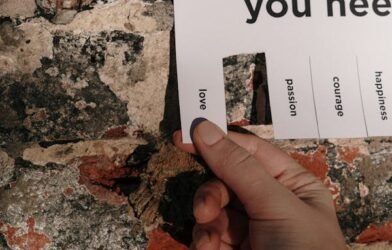|
Getting your Trinity Audio player ready...
|
Introduction
Your baby is now at home, but nobody advised you on the extent of bodily healing required. Postpartum recovery can feel like an uphill fight between round-the-clock feedings, hormonal rollercoasters, and the pressure to “bounce back,” especially when 90% of new mothers in the U.S. report dealing with residual physical discomfort and 1 in 9 new mothers report experiencing postpartum depression.
You’re not alone if you’re browsing contradicting advice at 2 a.m. and wondering, “Why does this feel so hard?”
Realistically, society enjoys idealizing the “glowing new mom” stereotype, but the truth is messy. Your body worked a miracle; if you’re sore, tired, or emotionally raw, it’s normal.
The news is good. Leading medical centers including the Mayo Clinic, Johns Hopkins Medicine, and the American College of Obstetricians and Gynecologists (ACOG) have cracked the postpartum care code.
From pelvic floor therapy to mental health tips, good recovery is about sustainable, evidence-based techniques that honor your path rather than short fixes.
Supported by top U.S. medical experts, this Blog will cut through the noise and offer postpartum recovery advice that really works.
You will learn how to:
- Reduce physical discomfort (yes, even that “down there” pain) free from guilt or gimmicks.
- Use American Psychological Association-approved strategies to negotiate emotional highs and lows.
Create a support network that shows up since “just ask for help” is not always practical.
These suggestions are meant for real life, not Instagram perfection, whether your recovery from a C-section, vaginal birth, or negotiating the fog of sleep deprivation. All set to give your healing top priority while looking after your child? One step at a time let us recover your strength.
Section 1: The Postpartum Body Explained
Interpretive Notes from Science Regarding Hidden Transformations Nobody Alerts You About
Your body is rewiring itself, not broken. Researchers at Harvard and ACOG want you to be aware of these things
• Hormonal Earthquakes: After birth, estrogen levels drop 100-fold, causing mood swings, night sweats, and hair loss. The milk-making hormone, prolactin, peaks and leaves you both hungry and tired.
• Core + pelvic floor overhaul: 60% of postpartum women have diastasis recti or ab separation.
o Vaginal birth can elongate pelvic ligaments equal to 200% of their normal length (per JAMA Surgery).
• Reality on C-sections: Though nerve regeneration takes up to 18 months, scar tissue develops in three weeks.
The lesson is that healing is a marathon rather than a sprint. Let’s skip the deadlines.
Section 2: Physical Reversals Beyond Ice Pads and Kegels
First tip: Pelvic Floor Therapy 101—Why Every Mom Needs It
• The figure: According to a 2023 Johns Hopkins study, PT helped 75% of women suffering from pelvic floor dysfunction see improvement.
• Complete the Guide with Steps:
Discover a specialist by: Asking using APTA’s PT Locator, “Do you treat postpartum diastasis recti?”
2. At-Home Beginning Actions:
Inhale to expand ribs sideways; exhale to gently engage the deep core. Do it five times a day.
Lie on the back, and slide one heel away while maintaining ribs down. Ten repetitions on each side.
• Pro Tip: Common after birth, avoid kegels if you have hypertonic, too-tight pelvic muscles!
Second tip: diet that promotes healing (not weight loss)
• The Science: Postpartum nutrient depletion lasts eighteen months. Give it top priority.
Foods high in iron: lentils, spinach (combat anemia from blood loss), grass-fed beef.
o Bone broth, salmon skin (helps connective tissue), collagen boosters
o Hydration Hacks: For electrolyte balance, coconut water plus a bit of salt.
Day 1: Sample Meal Plan
Breakfast is a spinach omelet with sweet potato hash; a snack is a Greek yogurt topped with chia seeds.
Lunch would be a quinoa bowl including roasted chicken, avocado, and beets.
Dinner calls for salmon, asparagus, and wild rice.
Third tip: smart movement for every stage
Weeks 0 to 2:
o Rest is our first concern. Go just to the bathroom on foot.
o Game-Changer: “Log rolling” out of bed to guard core.
Weeks 3–6:
o PT-approved moves: ankle pumps, seated marching.
o Steer clear of lifting anything weightier than your baby.
Apart from six weeks:
Wall sits, bird-dogs and resistance band rows help to rebuild strength.
o Cardio Rule: For high impact (per ACOG), wait 12 weeks.
Section 3: Mental Health: Negotiating the Invisible War
Fourth tip: decoding postpartum emotions—it’s not just “baby blues.”
• The Range:
o Normal: Mood swings, crying spells (peaks on day five, then fades on week two).
o About intrusive thoughts, anger, or numbness lasting more than two weeks.
o Emergency: Thoughts of self-harm; immediately call 988.
Cognitive Behavioral Therapy (CBT) has been shown to cut PPD symptoms by half (APA Journal)
Postpartum Support International (PSI) provides free online meetings
Fifth tip: Sleep deprivation survival kit; the hack is to match your circadian rhythm to the baby’s:
Red light bulbs in lamps (increases melatonin) between 6 p.m.-6 a.m.
Set the phone timer, lie on the left side, eye mask use the 10-minute power nap formula.
• Partner Strategy: “Shift parenting”—divide the night into four-hour blocks.
Section 4: The Unspoken Realities (And How to Address Them)
Tip 6: Body Image, Intimacy, and Sex
• When It’s Safe: ACOG has a minimum six-week policy. There is variation in emotional readiness.
• What helps? For hormonal dryness, Uberlube (OB-GYN favorite) lubricants
o Non-Sexual Touch: Foot rubs to restore connection, cuddling
• Mantra for body neutrality: “This body created life. It does not have to be “beautiful.”
The seventh tip is negotiating healthcare systems—your rights as a patient.
• Demand some screenings.
o At six weeks: diastasis recti assessment, thyroid check.
o Mental health screen at twelve weeks using the Edinburgh Postnatal Depression Scale.
PPD screening and lactation support are free under the ACA.
Section Five: Actual Stories, Actual Strength Case Study Maria’s Nine-Month Healing Path
Maria, thirty-four, experienced PPD and a third-degree tear. Her turning point is…
• Second week: began pelvic PT over teleconference.
• Month 3: joined the Spanish-language support group run by PSI.
• Month six included scar tissue incorporated pool therapy.
Her Advice: “Healing is not a straight line. Celebrate little victories like going to the mailbox.
Section 6: Your 90-Day Postpartum Road Map
Phase 1—Days 1 through 21—Survival Mode
• Rest, hydration, bonding—the focus here.
• Non-negotiables: o Daily “tea time” for yourself lasting ten minutes.
o TaskRabbit or MealTrain helps you distribute chores.
Phase 2 (weeks 4–12) is rebuilding foundations.
Add 10-minute PT drills and 15-minute walks.
• Mood Tracker: Record feelings with apps like Moodpath.
Phase 3 (four to six months) resilience plus strength
• Advanced Techniques: swimming, Pilates reformers.
Join stroller fitness sessions in your community.
FAQs on Postpartum Healing
Q: After delivery, how soon can I begin working out?
A: That relies on your healing progress and delivery style. Gentle walks and pelvic floor exercises can begin days (with the doctor’s permission) for vaginal births. Wait six to eight weeks before core work for C-sections. First, see your OB-GYN always.
Q: Is it common to experience depression several weeks following delivery?
A: Usually, “baby blues”—mild mood swings—fade two weeks. Should numbness, anger, or sadness linger, they could point to postpartum depression (PPD). Remember you are not alone; contact your provider or the National Maternal Mental Health Hotline at 1-833-852-6262.
Q: Should therapy be sought for my pelvic floor?
Red flags include leaking pee when sneezing, pain during sex, or a sense of pelvic pressure. For all postpartum women, even those whose symptoms seem “normal,” Johns Hopkins advises a pelvic floor PT evaluation.
Q: When will my stomach revert to normal?
A: It’s OK if your abdomen never looks exactly the same. With focused exercises, diastasis recti—ab separation—improves; but, emphasizes function over appearance. By six to twelve months most women see improvement.
Q.If I’m on antidepressants for PPD, can I still nurse?
A lot of SSRIs, like Zoloft, are safe for nursing according to the American Academy of Pediatrics. Talk always about medication choices with your doctor; mental health is just as important as physical health.
An Emotional Trip: How Postpartum Healing Made Me Love My Scars
From Texas, Emily, a Mom of Two
The first time I looked in the mirror following my emergency C-section will never fade. My breasts were swollen and leaking, my belly was scarred jaggedly, and nights spent rocking a colicky infant left hollow eyes.
I cried, grieved the body I had lost until my daughter Ava whimpered from her bassinet. I knew then that this body kept her alive.
Acceptance was not a straight road, though.
By eight weeks postpartum, I was unable to walk a block without pelvic agony. My pelvic organ prolapse and diastasis recti diagnosis came from my OB-GYN She said, passing me a referral, “You need rest and PT.” Thinking, Who has time for that, I folded it in my purse.
One night, then, I fell while lifting Ava. My husband discovered me on the floor of the nursery sobbing. “We are calling the PT tomorrow,” he said. I reluctantly left.
The first pelvic floor session felt embarrassing. Developing correct breathing techniques? kegels? This serves no purpose, I considered. By Week 4, though, I could stroll painlessly. By week twelve, I ran a mile—something I hadn’t done since high school.
“Your scar isn’t a flaw,” my therapist said, and that was the true breakthrough It’s evidence of your power. I trace that scar proudly today. It reminds me that honoring the story is more important in healing than in wiping out proof of birth.
Final Thought: your recovery represents your revolution
Recovering postpartum is not a checklist item for chores. In a society that expects new mothers to shrink, quiet, and “snap back,” it is a radical act of self-love. Remember:
- Your value has nothing to do with your waistline whether your challenges are physical, emotional, or social pressure.
- Seeking help is wisdom; it is not a weakness. Even a five-minute walk counts as a victory every little step.
- The struggle does not call for your being “grateful.” You can, however, decide to fight for the help you so well deserve.
- You deserve to flourish, not merely survive.














